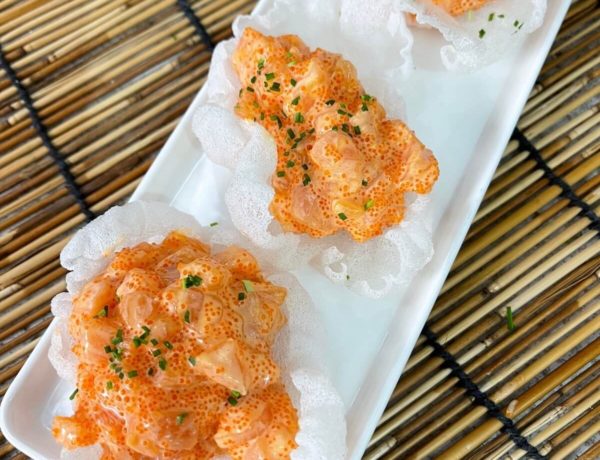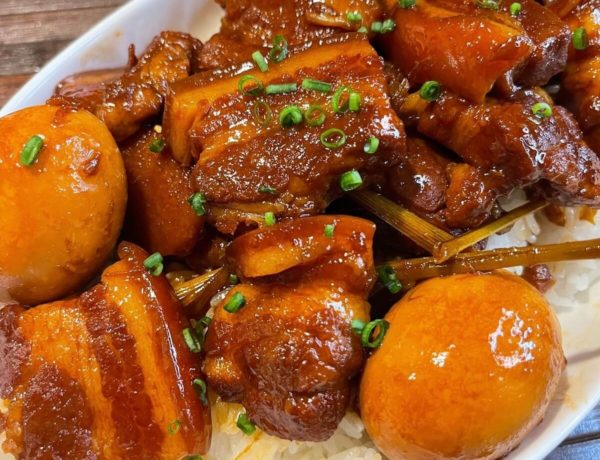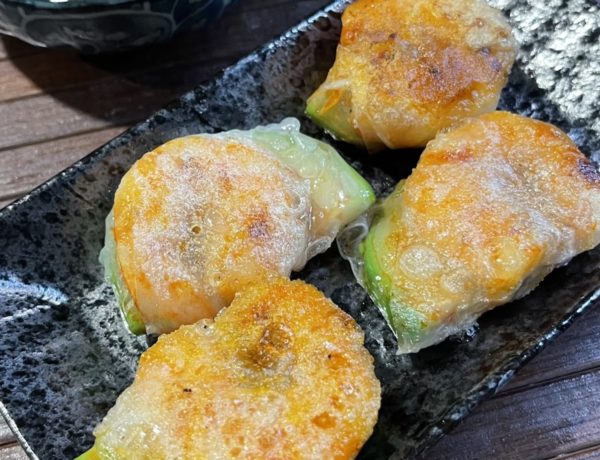Kimchi fried rice, or kimchi bokkeumbap, is Korean comfort food at its finest. This dish is a burst of flavors and, even better, it’s ready in no more than 15 minutes!
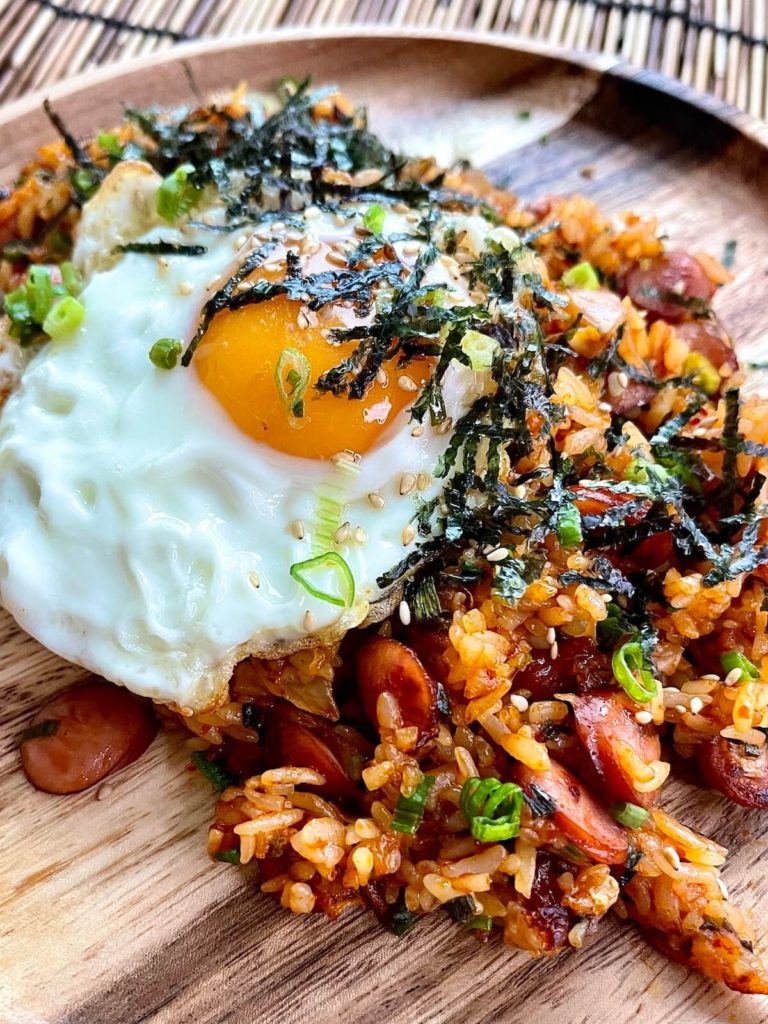
Kimchi fried rice is extremely versatile. I often alter this dish based on what I have on hand in the fridge. I like to add cut up sausage in mine, but you can go entirely meatless if you prefer.
Ingredients
Rice
There’s an ongoing debate between whether or not fresh or day-old rice is best for fried rice. There are pros and cons to both, but I use fresh rice as my first choice and day-old if it’s all I have at the moment. Try both ways and see which you prefer! This recipe uses fresh rice. I fry it until the moisture is removed and it ends up nice and crispy.
I use packaged Korean rice for this recipe for ease, but you can also use any short or medium-grain rice. You want it a bit glutinous, or sticky, so that’s why I recommend short/medium grain, but Jasmine rice works too.
Kimchi
You’ll need very fermented kimchi for this recipe. Fermented kimchi provides so much more flavor and is what’s traditionally used in Korea. It’s sort of an acquired taste, so use regular kimchi if you’re not a fan.
Soy sauce
Soy sauce, or ganjang, provides an umami flavor to the dish. It sort of brings all of the flavors together in perfect balance. I use a Korean brand soy sauce which is much less salty and a bit more sweet than its Japanese counterparts. So, alter the measurements based on the soy sauce you’re using. Soy sauce is added to the frying pan before the rice so it is able to “burn off”, which creates a more complex flavor than just adding it to the rice.
Sugar
Sugar is essential to this recipe because it cuts the taste of the fermented kimchi. I recommend adding a little bit at a time, tasting it, then add more if needed. It really does add so much flavor and provides balance to the other strong flavors (like sour and savory), so don’t be shy when adding this in.
Gochujang
Gochujang, or Korean red pepper paste, is commonly used in many traditional and fusion dishes. It’s optional for this recipe, but I really like the extra dimension of flavor it gives the rice. Gochujang is not as spicy as it looks and brands vary in level of spiciness.
Gochugaru
Gochugaru, or Korean red pepper flakes, adds a spicy kick to the dish and a vibrant red color. It’s completely optional, but use it if you like it spicy!
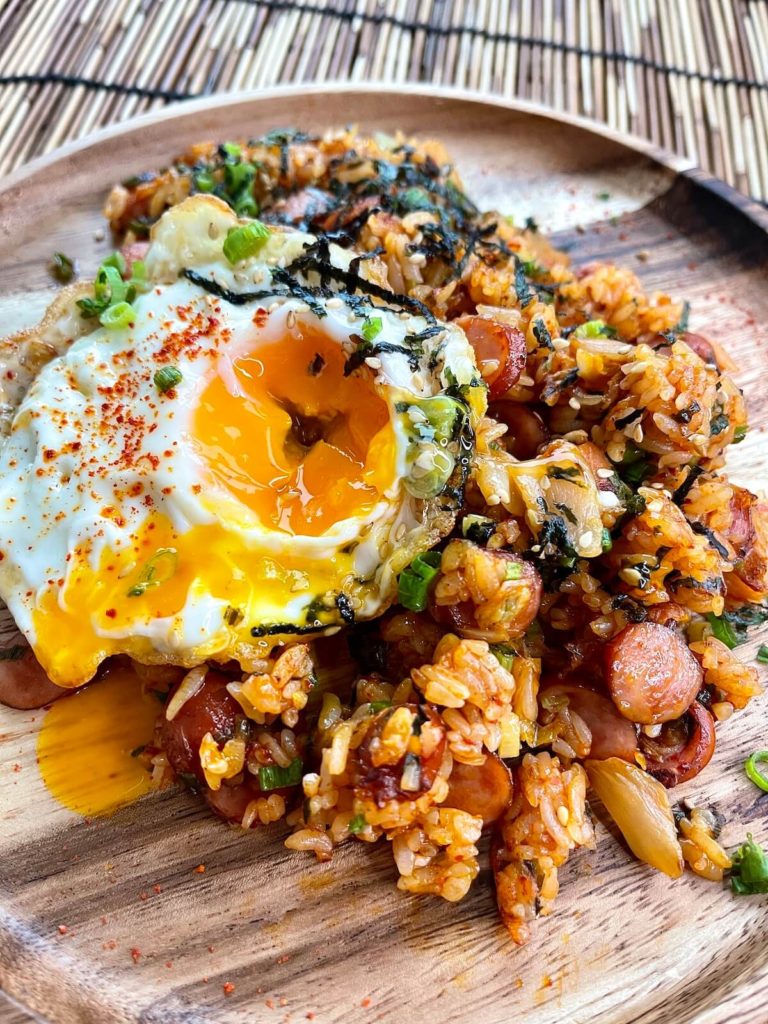
Toppings
I like to add scallions, sesame oil and sesame seeds towards the end of cooking. In the last minute of cooking, add the scallions which will allow it to soften. Sesame oil has a low smoke point, so I add this at the end after turning off the heat. Lastly, I add sesame seeds which gives the rice a toasty, nutty flavor. All three of these ingredients are optional, so if you don’t like the taste of any of these ingredients, just leave it out.
Kimchi fried rice variations
- Add a layer of melty cheese on top
- Stir fry chili peppers if you like it spicy
- Don’t like sunny-side up egg? Scramble it in or poach it!
- Meat ideas: spam, bacon, ham or pork belly
- Surprisingly, canned tuna is a common kimchi fried rice ingredient in Korea. The flavored Korean spicy canned tuna brands are even tastier.
- Want your rice extra creamy? Add Asian mayo – I suggest Kewpie Japanese mayo or Ottogi Korean brand.
Like I said earlier, kimchi fried rice is very versatile! Here are some ideas if you’re feeling creative. Some may sound a bit strange to you, but I assure you that many people eat it this way.


Kimchi Fried Rice (김치 볶음밥)
- Total Time: 15
- Yield: 1 1x
Description
Kimchi fried rice, or kimchi bokkeumbap, is Korean comfort food at its finest. This dish is a burst of flavors and, even better, it’s ready in no more than 15 minutes!
Ingredients
- 1 tbsp oil
- 8 scallion stalks, chopped (38g)
- ½ cup sliced mini sausages (70g)
- 2 tsp Korean soy sauce *see note
- 1 tsp sugar + extra if needed
- ⅓ cup fully fermented kimchi
- 2 tsp gochujang (Korean red pepper paste) + 2 tsp water mixed together
- instant rice container (210g, ~1 cup fresh rice)
- gochugaru (Korean red pepper flakes)
Other
- 1 egg + pan frying oil
- toppings: sesame seeds, sesame oil, seaweed flakes (optional)
Instructions
- In a large frying pan, add oil and half of the scallions. Turn the heat on to medium and let the scallions gently come to temperature. Add the sausages once the scallions begin to sizzle and let it cook for about 5 minutes, or until lightly golden brown. Reduce the heat if needed so the scallions do not burn.
- Add the soy sauce and sugar and mix well. Cooking the soy sauce on high heat brings out more flavor. Add the kimchi and the gochujang + water mix (the water is used to loosen the thick paste).
- Next, add the instant rice and break apart and clumps of rice stuck together. Season with gochugaru for more spice and continue cooking until it reaches your desired crispiness, about 5 to 8 minutes. The longer you cook, the more moisture will evaporate from the rice.
- Taste it and add more seasonings if needed. I added extra sugar which tones down the sourness from the kimchi. Add the other half of the scallions in the last minute and mix to let it soften. Fry an egg in the meantime and garnish with sesame seeds, sesame oil and seaweed flakes. Enjoy!
Notes
Korean soy sauce, or ganjang, is slightly sweeter and much less salty compared to Japanese soy sauce. Adjust your seasonings accordingly if you’re not using Korean soy sauce like this recipe intended!
- Prep Time: 5
- Cook Time: 10
